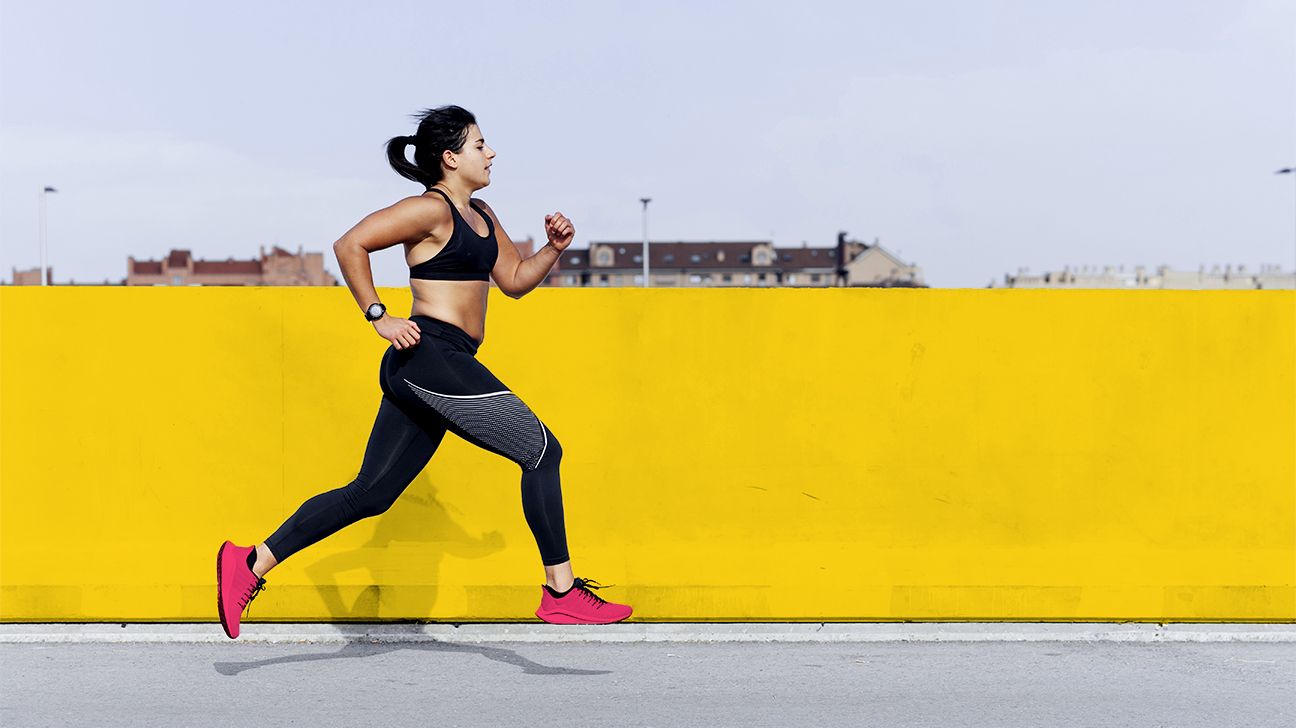Experts don’t know for sure but think side cramps during exercise may be caused by diaphragm issues, poor posture, or nerve irritation from your foot striking the ground.
Side stitch, stomach cramp, side ache — whatever you wanna call it, that mid-run pain in your tum can seriously *cramp* your runner’s high.
This pesky prob that plagues runners and athletes all over has a scientific name: Exercise-related transient abdominal pain (ETAP). Though experts don’t know exactly what causes it, they have some ideas and tips about how to stop it.
Before you double-over during your next marathon, here’s what to know.

That fateful stab in your side is most likely to happen during exercise where your upper bod says tight and upright for an extended period, such as when you run, jog, bike, hike, play soccer, etc.
This common prob has been around for ages — the first historical mention is from ancient Roman philosopher Pliny the Elder. Yet, scientists still haven’t reached a consensus on its exact cause. We know that it affects up to 70% of runners each year.
It’s also more likely to occur on the right side.
A stiff spine or poor posture (according to older research from 2010) could contribute to side stitches – but TBH, the pros don’t know for sure.
According to a 2022 review, researchers also think a side stitch might be caused by your right foot hitting the ground while you breathe out, irritating a phrenic nerve. Researchers think this, in turn, may bother the lining of your abdomen (particularly on the lower right side). Since most people are right-foot dominant, this is one possible explanation.
Experts also theorize that it could be triggered by the boost of blood flow around the diaphragm when running.
When a side stitch strikes, don’t stress – there are steps you can take, including:
- Slowing down, which should help lend some immediate relief. When the pain subsides, you can slowly build your pace back up.
- Stretch it out by raising your arms overhead, leaning to the opposite side of the pain, and breathing deeply. That may open up your abdomen and offer some relief.
- Apply gentle pressure by pressing your palm into the cramp while breathing deeply.
To stop a side stitch before it begins, here are some ideas FTW:
- Practice mindful workout breathing. According to a 2022 review, slower breathing during exercise might “trick” your bod into thinking the exercise is easier, increasing pleasant feelings and reducing stress. While the study doesn’t mention side cramps, it could be worth a try since stitches may be linked to blood flow surrounding the diaphragm.
- Avoid big meals or beverages a couple of hours before you run. Though experts don’t know for sure, too much food or liquid in your belly could potentially put extra pressure on your precious organs, leading to a cramp.
- Work on your posture. Proper posture can improve breath flow and running performance. Research from 2014 suggests building up your abs could help prevent side stitches.
- Stay hydrated to stay healthy in general and potentially prevent side stitches.
- Start slow and work your way up. When working out, starting small and gradually upping your challenge helps reduce the risk of injury. In the same way, gradually increasing your speed rather than diving straight into a sprint may also help reduce the risk of a side stitch.
Side stitches are usually harmless. But it’s always a good idea to visit a pro if you experience any of the following probs:
- Pain under your breastbone (higher upper than a side stitch) accompanied by difficulty catching your breath could indicate a heart or lung issue.
- Persistent pain after running could indicate a chronic condition.
- Severe or debilitating stomach pain or cramps could also signal a more serious condition.
Side stitches are a common issue and not typically the reason for concern. Though pros don’t know what causes them, they think issues with breathing, posture, or nerves may play a role.
Consider working on your running form or breathing to reduce the risk of experiencing a side stitch. Staying hydrated and avoiding huge meals pre-run may also help. Consider working with a physical therapist or personal trainer if your issues persist.
If you experience pain under your breastbone when running, visit a doctor asap.

